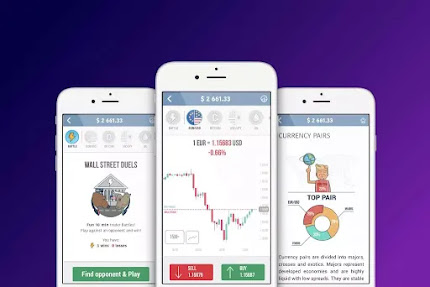Let’s see how to build a stock trading app.
1. Initiate the project
Onboard a competent project manager (PM), an experienced IT architect, and a team of business analysts (BAs) with the experience of working in the financial services industry. You will build web and mobile apps, which are “Systems of Engagement” (SoEs). Therefore, you should use the Agile methodology, as I had explained in “Waterfall vs Agile: which methodology is right for your project”.
Start planning for your “Minimum Viable Product” (MVP), which involves the following:
Conducting market research to gain insights Arranging discovery sessions to understand what your customers want and what “value” means for them; Using tools like “Pain and gain map”, prioritization matrix, etc. to prioritize features for your MVP and the overall app.
2. Define the project scope
To start with, I recommend that you support English-speaking customers and offer the following:
A web app, an Android app, and an iOS app;
Features like the TD Ameritrade Mobile app.
Note: Consider the app internationalization guidelines like keeping the code separate from the content when designing and developing the app. This will help you to offer more language support in the future. Read “The ultimate guide to mobile app internationalization” for more insights.
3. Plan to secure your app
Security is a high-priority consideration for you when building a stock trading app since it will process sensitive information and the sector is governed by stringent regulations. Do the following:
Proactively mitigate application security risks like injection, XML external entities (XXE), cross-site scripting (XSS), etc. The “Open Web Application Security Project (OWASP) top 10 application security risks – 2017” report provided valuable guidance concerning this.
Use cloud computing judiciously, e.g., you might need to use a hybrid cloud deployment.
Incorporate modern techniques and tools like multi-factor authentication (MFA), bank-grade encryption, next-generation firewalls, etc. Use real-time threat intelligence to remain on top of cybersecurity threats.
Embrace “Compliance-as-code” to incorporate security and compliance testing early in your CI/CD pipeline. You can read “Compliance-as-code: Addressing compliance challenges through automation” for more information.
Secure your “application programming interfaces” (APIs).
Read our guide “How to secure your Fintech app” for more insights.
4. Formulate a development approach
I recommend that you consider the following building blocks when deciding on a development approach:
Use managed cloud services like “Platform-as-a-Service” (PaaS) and “Mobile-Backend-as-a-Service” (MBaaS) platforms to expedite your development.
Design and develop APIs for core features, however, use market-leading 3rd party APIs for non-core features like push notifications.
Create native mobile apps since they offer the best user experience, security, and performance.
Use a mobile device and browser lab on the cloud to improve your test coverage.
I have earlier explained the importance of this approach in “What is the best development approach to guarantee the success of your app?”.
5. Form and organize the complete development team
You ought to onboard competent people to form an effective team, therefore, consult our guide “How to find a good software developer”. Onboard the following roles:
UI designers;
JavaScript developers for web development;
Android developers with Java skills or languages such as Python, etc;
Swift developers for iOS development.
Testers;
DevOps engineers.
You need to build a cohesive team, therefore, you should foster collaboration in the team environment. I recommend that you use the time-tested “Scrum” technique for this, which is highly suitable for Agile projects.
The PM performs the role of a “Scrum master”, as I had explained in “How to build a Scrum development team?”. Form “Scrum teams”, i.e., small, cross-functional teams where developers and testers work together in close collaboration with the business stakeholders.
Such a team works as follows:
A “Product owner” provides requirements in a document named the “Product Backlog”, and the team estimates them.
The team works with the business stakeholders to schedule the requirements in “Sprints”, i.e., iterations, and this process is called “Sprint planning”.
Scrum teams are empowered, and they hold “Daily stand-up meetings” to discuss the project status.
They receive approval for a sprint in a “Sprint review meeting” where they demonstrate the app.
You should use a modern PM tool like Jira to manage this team.
6. Choose appropriate PaaS and MBaaS platforms
Use AWS Elastic Beanstalk, i.e., the PaaS offering from AWS to develop the web app. PaaS platforms offer the following advantages:
They manage the cloud infrastructure, networking, operating system, middleware, and runtime environment, and this enables you to focus on coding.
Integrating databases and APIs are easy with PaaS platforms, moreover, their DevOps and auto-scaling solutions are helpful.
Read our guide “10 top PaaS providers for 2020” for more information.
Sign-up for AWS Amplify, i.e., the MBaaS offering from AWS using the same AWS account. You get the following advantages:
Since Amplify manages the cloud infrastructure, persistent storage, etc., you don’t need to build and manage the mobile backend.You can easily integrate APIs when using Amplify, moreover, the platform makes it easier to implement features like user management and push notifications.
Also, MBaaS platforms like Amplify make it easier to scale a mobile app, as I have explained in “How to choose the best Mobile Backend as a Service (MBaaS)?”.
7. Sign-up for 3rd party APIs to incorporate the non-core features
Your core features are trading-related, and while you must provide market data in your app, that’s not your core feature. I recommend that you use a reliable 3rd party API solution to access market data, and I suggest that you sign-up with Xignite.
Its “Financial Data APIs” offer information about stock quotes, ETFs, mutual funds, indices, company fundamentals, earnings & news, etc. Xignite claims to offer high-quality data covering global markets, moreover, it claims that its APIs are highly scalable.
You can read its “Getting started guide” for guidance. Contact Xignite for its pricing.
While you should offer the push notifications feature for improving user engagement, it’s not a core feature. Therefore, you should use a 3rd party bulk-SMS API solution to implement this, and I recommend Twilio.
Sign-up for the “Programmable SMS” offering from Twilio, and read “Messaging services and Copilot” to learn how to integrate it with your app. You can view the Twilio pricing plans to understand how much this solution costs.
8. Develop APIs to implement the core features
Trading-related features are the core features in your proposed app. Design and develop APIs to implement these features, which will enable you to use the full range of your business capabilities. Take the following steps:
Use tools like Postman to expedite API development and testing, moreover, use Swagger to document the APIs.
Host the APIs using your AWS account.
Proactively mitigate API security risks by using authentication, encryption, quotas, throttling, and gateways. You can read “What is API security?” for guidance.
Manage your API development, staging, and production environments effectively.
Use PostgreSQL as RDBMS and MongoDB as NoSQL databases for your APIs.
Make sure that the APIs support web, Android, and iOS.
Design meaningful URL paths and effective rules for requests and responses.
Read our guide “How to build RESTful API for your mobile app?” for more insights.
9. Use a mobile device lab on the cloud for testing
You need to ensure that your mobile app works with all devices. However, you need to test your app against a wide range of devices for this.
Cloudy offers this capability, with its mobile device and browser lab that has over 5,000 devices/browsers combinations. Check out the pCloudy documentation for guidance, also, review its pricing plans.
10. Design user-friendly user interfaces (UI)
You need to offer simple yet effective UIs to your app users. Appropriate guidelines could help you, therefore, consult the following:
“User interface design guidelines: 10 rules of thumb” for designing the web app UI;
“Material design” guidelines for the Android app UI design;
“Human Interface Guidelines” for designing the iOS app UI.
11. Develop, test, and deploy your web app
Code the web app using Node.js, which is a popular open-source runtime environment. Take the following steps:
Integrate the APIs.
Test the app and deploy it on AWS Elastic Beanstalk using its DevOps tools. Read “Deploying Node.js applications to AWS Elastic Beanstalk” for guidance.
12. iOS app development
Use Swift, the modern language for developing apps for Apple platforms to code your proposed iOS app. You need to do the following:
Use Xcode, the IDE championed by Apple.
The next step is to integrate your APIs and those for Xignite and Twilio.
Use the pCloudy mobile device lab and XCTest to test the app.
You can publish the app to Apple App Store by following the instructions in “Submit your apps to the App Store”.
13. Develop your Android app
Code the Android app using Java, and use Android Studio for development. Take the following steps:
Integrate the APIs.
Test the app using the pCloudy mobile device lab and Espresso.
Follow the instructions in “Publish your app” and publish the app to Google Play.
Note: Don’t forget development guidelines vary between the two platforms so you will need to account for this when developing your UI, etc., otherwise user-profiles and other information may not be displayed correctly, while in the worst-case scenario, your app might not be accepted at all.
Planning to unveil your stock trading app?
The market for stock trading apps is lucrative, however, it’s highly competitive. Your app must stand out. Expect the development project to be a complex one, partly due to the stringent data security regulations. Take help from a reputed software development company, and read “How to find the best software development company?” to find one.
If you are looking for top developers to help you to create your stock trading app then why not take a moment to fill out a The Dev Experts. Space project specification form. Our community of expert developers and dev teams has built a number of stock exchange, blockchain, and automated cryptocurrency trading apps that are in the marketplace today!
Frequently Asked Questions
What is the best stock trading app?
Fidelity is a great stock trading app. As a result, it has a large number of users and is well supported.
Are stock trading apps reliable?
All
of the top trading apps are safe and reliable. They conform to the laws
regarding money trading in their respective countries and so must do
everything possible to protect your personal details and money.
How to build a stock trading app?
If
you don’t have development experience then onboard the relevant
developers from a reputable software development company like The Dev
Experts.Space and start the ball rolling. When planning your trading
system, keep in mind that functionality is key to its success, it should
have a clear UI that gives all the e-trade information from all the
financial markets of the different countries traders wish to trade in.
What is SIPC and Forex?
SIPC
stands for Securities Investor Protection Corporation. It mandates
membership of most US-registered broker-dealers. Forex is the global
foreign exchange market for trading currencies at variable exchange
rates.
What is Robinhood?
It is a brokerage platform that allows stock trading. It was recently used by millennial activists and others to boost the price of GameStop shares in order to attack hedge funds that had shorted the stock.








.png)
0 Comments